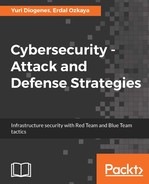Windows has several accessibility features that are supposed to help users to interact better with the OS and more attention is given to users that may have visual impairments. These features include; the magnifier, screen keyboard, display switch, and narrator. These features are conveniently placed on the Windows login screen so that they can be supportive to the user from the instant that he/she logs in. However, attackers can manipulate these features to create a backdoor through which they can log into the system without authentication. It is quite an easy process and can be executed in a matter of minutes. An attacker will be required to have compromised a Windows computer using a Linux LiveCD. This tool will allow the attacker to boot the computer with a temporary Linux Desktop OS. Once in the machine, the drive containing the Windows OS will be visible and editable. All these accessibility features are stored as executables in the System32 folder. Therefore, a hacker will go and delete one or more of these and replace them with a command prompt or a backdoor. Once the replacement is done and the hacker has logged out, all will seem normal when the Windows OS is started. However, an attacker will have a walk-around to bypass the login prompt. When the OS displays the password prompt, the attacker can simply click on any of the accessibility features and launch the command prompt.
The command prompt that will display will be executing with system access, which is the highest level of privilege for a Windows machine. The attacker can use the command prompt to achieve other tasks. It can open browsers, install programs, create new users with privileges, and even install backdoors. An even more unique thing that an attacker can do is to launch the Windows Explorer by supplying the command explorer.exe into the command prompt. Windows Explorer will open on the computer that the attacker has not even logged into and it will open as a system user. This means that the attacker has exclusive rights to do whatever he pleases on the machine, without being requested to log in as an administrator. This method of privilege escalation is very effective, but it requires the attacker to have physical access to the target computer. Therefore, it is mostly done by insider threats or malicious actors that enter into an organization's premises through social engineering.
